Blog
Top 10 Freelancing Skills in Pakistan in 2025
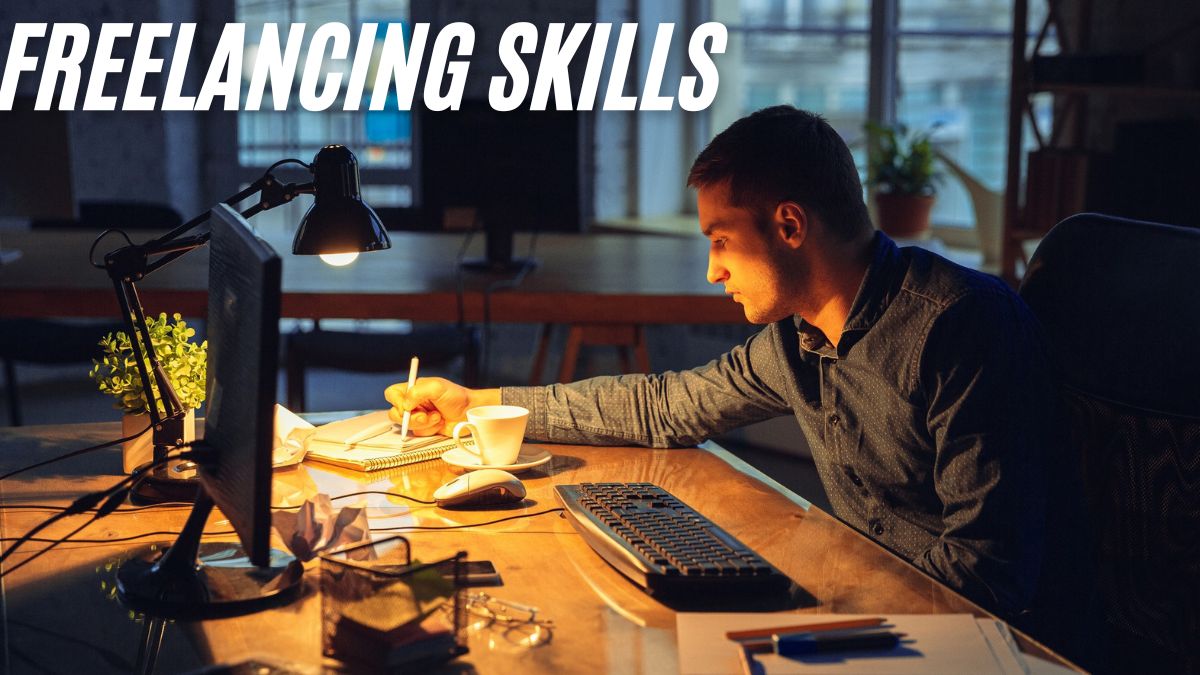
Freelancing has gained immense popularity over the years, especially in countries like Pakistan, where the youth are constantly seeking opportunities to earn income independently. By 2025, freelancing in Pakistan is expected to continue its growth, with the number of professionals embracing this mode of work increasing significantly. As businesses around the world embrace digital transformation, the demand for skilled freelancers is skyrocketing. In this article, we will explore the top 10 freelancing skills in Pakistan in 2025, providing you with insights into which skills will be in high demand and how you can prepare for a successful freelancing career.
Why Freelancing is Gaining Popularity in Pakistan
Before diving into the specific skills, let’s understand why freelancing is flourishing in Pakistan. There are several key reasons contributing to this trend:
- Access to Global Markets: With the rise of online platforms like Upwork, Fiverr, and Freelancer, Pakistani freelancers have access to a global pool of clients. This has opened up new opportunities for earning foreign currency.
- Low Barriers to Entry: Freelancing doesn’t require expensive educational qualifications or long-term commitments to an office. With just a laptop and internet connection, anyone with the right skill set can start earning.
- Flexibility and Independence: Freelancers can work from anywhere, at any time. This flexibility is highly appealing, especially to students, homemakers, and individuals looking to supplement their income.
1. Web Development
Web development continues to be one of the most in-demand freelancing skills in Pakistan. The increasing demand for websites, web applications, and e-commerce platforms is creating ample opportunities for skilled web developers. With businesses across the globe moving online, web development has become a crucial aspect of digital transformation.
Skills Required:
- Proficiency in HTML, CSS, JavaScript, and frameworks like React and Angular
- Understanding of backend languages like PHP, Python, Ruby, and Node.js
- Familiarity with content management systems (CMS) like WordPress and Shopify
As more businesses in Pakistan and abroad build their online presence, skilled web developers will be in high demand. Web development offers excellent earning potential, with clients willing to pay top dollar for high-quality, user-friendly websites.
2. Graphic Design
Graphic design is another thriving freelancing skill in Pakistan. From creating brand identities to designing marketing materials and social media content, graphic designers are needed in virtually every industry. In 2025, businesses will continue to rely heavily on visually appealing content to attract customers.
Skills Required:
- Proficiency in design tools like Adobe Photoshop, Illustrator, and InDesign
- Strong understanding of color theory, typography, and layout design
- Experience with branding and logo design
Graphic designers can work on a wide variety of projects, ranging from creating business logos to designing website elements. With the growing focus on visual content, the demand for graphic designers will only increase.
3. Digital Marketing
As more businesses move online, digital marketing has become one of the most lucrative freelancing skills in Pakistan. Companies need experts to manage their online presence and create effective marketing strategies. Digital marketing includes SEO (Search Engine Optimization), social media marketing, email marketing, and pay-per-click advertising.
Skills Required:
- Knowledge of SEO and SEM (Search Engine Marketing)
- Social media management and advertising (Facebook, Instagram, LinkedIn)
- Proficiency in tools like Google Analytics and Hootsuite
- Experience with email marketing and content marketing
Digital marketers help businesses reach their target audience and generate leads. With a strong understanding of digital advertising platforms and content strategies, freelancers in this field can build a long-term, profitable career.
4. Content Writing and Copywriting
Content writing is one of the most versatile freelancing skills that can lead to a wide range of opportunities. Whether it’s writing blogs, articles, website copy, or product descriptions, content writers are needed across various industries. As of 2025, businesses will continue to prioritize high-quality content for SEO and customer engagement.
Skills Required:
- Excellent writing, editing, and proofreading skills
- Knowledge of SEO and keyword research
- Ability to write for different industries and niches
Content writers can specialize in various niches, such as tech, health, lifestyle, or finance. Freelancers who can deliver well-researched, engaging, and SEO-optimized content are highly sought after by clients worldwide.
5. Mobile App Development
The demand for mobile applications continues to grow as smartphones become more integrated into everyday life. Freelancers with skills in mobile app development are well-positioned to cater to this growing market. In Pakistan, as more startups emerge, the need for mobile app developers will increase significantly in 2025.
Skills Required:
- Proficiency in programming languages like Java, Swift, or Kotlin
- Experience with mobile app development frameworks like React Native or Flutter
- Understanding of UI/UX design principles
Mobile app developers have the potential to earn high rates, especially if they can build apps that are both functional and user-friendly. Freelancers in this field can work on everything from entertainment apps to business solutions, making it a versatile and profitable skill.
6. Video Editing and Animation
Video content has become an essential marketing tool for businesses, particularly for social media platforms like YouTube, Instagram, and TikTok. Video editing and animation skills are in high demand as companies strive to produce high-quality video content to engage their audience.
Skills Required:
- Proficiency in video editing software like Adobe Premiere Pro and Final Cut Pro
- Knowledge of animation tools like After Effects and Blender
- Creativity and attention to detail
Freelancers who can edit and animate videos can work with clients in various industries, from entertainment to education and marketing. With the rise of video-based content, this skill will continue to be in demand.
7. Virtual Assistance
Virtual assistants are becoming increasingly important as businesses look for ways to reduce overhead costs and improve efficiency. In 2025, more companies will outsource administrative tasks such as scheduling, email management, and customer service to virtual assistants.
Skills Required:
- Strong communication and organizational skills
- Proficiency in office software like Microsoft Office and Google Workspace
- Experience with project management tools like Trello or Asana
As a virtual assistant, freelancers can offer services like calendar management, data entry, customer support, and more. With the growing number of entrepreneurs and small businesses, the demand for virtual assistants will continue to rise.
8. Software Development
Software development is another high-paying freelancing skill in Pakistan. Companies worldwide need custom software solutions to streamline their operations, improve customer experiences, and drive growth. Freelancers with expertise in software development will find ample opportunities in 2025.
Skills Required:
- Proficiency in programming languages like Python, Java, or C++
- Familiarity with database management and cloud computing
- Experience with agile methodologies and version control tools
Freelancers in software development can work on a range of projects, from building enterprise-level applications to developing smaller, niche software solutions. This field offers high earning potential and long-term opportunities.
9. E-commerce Management
E-commerce is one of the fastest-growing industries globally. In Pakistan, with platforms like Daraz and Shopify gaining popularity, the demand for e-commerce managers will continue to grow. These freelancers help businesses optimize their online stores, manage inventory, and improve customer satisfaction.
Skills Required:
- Knowledge of e-commerce platforms like Shopify, WooCommerce, and Magento
- Experience with online sales strategies and inventory management
- Understanding of customer experience and fulfillment processes
Freelancers with skills in e-commerce management can work with businesses of all sizes, from small shops to large online retailers. As e-commerce continues to thrive, the need for skilled managers will only increase.
10. Blockchain Development
Blockchain technology has emerged as a game-changer in various industries, including finance, healthcare, and supply chain management. In 2025, blockchain development will be one of the most sought-after skills in Pakistan as businesses look to implement decentralized systems and cryptocurrencies.
Skills Required:
- Knowledge of blockchain platforms like Ethereum and Hyperledger
- Experience with smart contracts and cryptocurrency technologies
- Understanding of cryptography and distributed ledger systems
Blockchain developers are in high demand due to the technology’s potential to disrupt traditional systems. Freelancers who can develop blockchain applications and solutions will find lucrative opportunities in the coming years.
How to Master These Skills
If you want to become a successful freelancer in Pakistan in 2025, it’s crucial to invest in developing the right skills. Here are a few tips to get started:
- Take Online Courses: Platforms like Udemy, Coursera, and LinkedIn Learning offer high-quality courses on various freelancing skills. Choose the ones that best fit your interests and career goals.
- Build a Portfolio: Create a portfolio showcasing your best work. Potential clients want to see evidence of your skills before hiring you.
- Stay Updated: Freelancing trends and technologies evolve rapidly. Stay informed about the latest tools and practices in your field.
- Network: Join freelancing communities and platforms to connect with other professionals and potential clients.
Here’s a breakdown of what this keyword implies and potential areas to explore beyond the provided article:
Key Implications:
- Focus on Pakistan: The keyword specifically targets the Pakistani freelancing market, acknowledging the unique opportunities and challenges within that context.
- Time-Bound: The year “2025” adds a layer of specificity, suggesting an analysis of skills that were particularly relevant or in high demand during that year.
- Top 10: This implies a ranking or prioritization of skills based on factors such as:
- Demand: High demand from clients (both domestic and international).
- Earning Potential: Skills that typically command higher pay rates.
- Growth Potential: Skills with a strong likelihood of continued growth and long-term viability.
- Job Market Trends: Analysis of job postings, hiring trends, and industry reports.1
Beyond the Provided Article:
To delve deeper into “Top 10 Freelancing Skills in Pakistan in 2025,” you could explore these areas:
-
Data-Driven Analysis:
- Job Board Analysis: Scrutinize job postings on platforms like Upwork, Fiverr, and local Pakistani freelancing platforms to identify the most frequently requested skills.
- Salary Data: Analyze data on freelance earnings for different skills in Pakistan to identify the most lucrative options.
- Industry Reports: Consult reports from organizations like P@SHA (Pakistan Software Houses Association) or other relevant research institutions for insights into the Pakistani freelancing market.
-
Skill-Specific Deep Dives:
- For each of the top 10 skills:
- Specific sub-skills: For example, within “Web Development,” explore the demand for specific technologies like React, Node.js, or specific CMS (Content Management Systems).
- Niche Specializations: How can freelancers specialize within a broader skill (e.g., “Medical Content Writing,” “UI/UX Design for E-commerce”).
- Tools and Technologies: Identify the essential tools and technologies associated with each skill.
- For each of the top 10 skills:
-
Factors Influencing Skill Demand:
- Economic factors: How did the Pakistani economy in 2025 influence the demand for certain freelancing skills?
- Technological advancements: How did emerging technologies (like AI, AR/VR) impact the freelancing landscape?
- Government initiatives: Were there any government programs or policies that supported the growth of the freelancing sector in Pakistan?
-
Challenges and Opportunities:
- Challenges: What were the biggest challenges faced by Pakistani freelancers in 2025 (e.g., competition, client acquisition, skill gaps)?
- Opportunities: What unique opportunities did the Pakistani freelancing market offer in 2025 (e.g., access to specific niches, cultural advantages)?
By exploring these areas, you can gain a more comprehensive understanding of the “Top 10 Freelancing Skills in Pakistan in 2025” and the factors that contributed to their prominence.
Disclaimer: This analysis is based on the provided keyword and general knowledge about freelancing trends. For the most accurate and up-to-date information, refer to specific research reports, industry publications, and data from reputable sources.
Conclusion
The freelancing industry in Pakistan is thriving, and by 2025, it will become an even more significant part of the economy. With the right skills, you can tap into the growing demand for freelancers in various fields, from web development to blockchain development. By focusing on the top 10 freelancing skills in Pakistan in 2025, you can position yourself for success in the digital economy. Whether you are just starting out or looking to upgrade your skills, now is the perfect time to invest in your freelancing career.
Frequently Asked Questions (FAQs)
1. What are the top freelancing skills in Pakistan in 2025?
The top freelancing skills in Pakistan in 2025 include web development, graphic design, digital marketing, content writing, mobile app development, video editing and animation, virtual assistance, software development, e-commerce management, and blockchain development. These skills are expected to be in high demand as businesses continue to shift to online platforms and digital solutions.
2. Why is freelancing becoming popular in Pakistan?
Freelancing is becoming popular in Pakistan due to several factors, including access to global markets, low barriers to entry, and the flexibility and independence it offers. With the growing number of online platforms and increasing demand for digital services, freelancers in Pakistan can earn foreign currency while working from anywhere.
3. How can I start freelancing in Pakistan?
To start freelancing in Pakistan, identify the skills you want to offer and build expertise in them. You can take online courses, create a portfolio, and sign up on freelancing platforms like Upwork, Fiverr, and Freelancer. Networking with clients and continuously upgrading your skills will help you succeed in the freelancing world.
4. What is the earning potential for freelancers in Pakistan?
The earning potential for freelancers in Pakistan varies depending on the skill set, experience, and the type of clients they work with. High-demand skills like web development, mobile app development, and blockchain development can offer lucrative opportunities. Freelancers can earn anywhere from a few hundred to several thousand dollars per month, depending on their expertise and client base.
5. What skills are required for digital marketing?
To excel in digital marketing, you need a strong understanding of SEO (Search Engine Optimization), social media marketing, content marketing, and pay-per-click (PPC) advertising. Familiarity with tools like Google Analytics, Hootsuite, and social media platforms such as Facebook, Instagram, and LinkedIn is also important.
6. How do I stand out as a freelance graphic designer in Pakistan?
To stand out as a freelance graphic designer, focus on creating a strong portfolio that showcases your best work, and specialize in niche areas such as logo design, branding, or UI/UX design. Stay updated on the latest design trends, and be proficient in tools like Adobe Photoshop, Illustrator, and InDesign.
7. Which freelancing skills are most in demand globally in 2025?
Some of the most in-demand freelancing skills globally in 2025 include web development, digital marketing, content writing, mobile app development, video editing, graphic design, and blockchain development. As businesses continue to digitalize, these skills will remain essential for companies worldwide.
8. How long does it take to master freelancing skills in Pakistan?
The time it takes to master freelancing skills depends on the complexity of the skill and the amount of time you dedicate to learning and practicing. It may take a few months to a year to become proficient in a specific skill. Continuous learning and hands-on experience are key to becoming an expert.
9. Is freelancing a sustainable career in Pakistan?
Yes, freelancing is becoming a sustainable career option in Pakistan. As businesses increasingly turn to digital solutions, the demand for skilled freelancers will continue to grow. By honing in on high-demand skills and offering quality services, freelancers can build long-term, profitable careers.
10. How do I get clients as a freelancer in Pakistan?
To get clients as a freelancer, start by building a strong online presence through freelancing platforms, social media, and a personal website. Network with other professionals and potential clients, offer competitive rates, and ensure you provide excellent customer service. Building a portfolio and gathering positive reviews can help attract more clients over time.
Blog
Paper Screening Based Test Ph-V for DM (B-15) Domicile holders of Nowshera, Charsadda & Malakand District in the E&SED Khyber Pakhtunkhwa [TEST DATE: 1st June’ 2025]
Candidate’s Answer Sheet Section
PST (BPS-12), CT (BPS-15), PET (BPS-15), DM (BPS-15), TT (BS-15)
Blog
How to gain High-Value clients on LinkedIn?
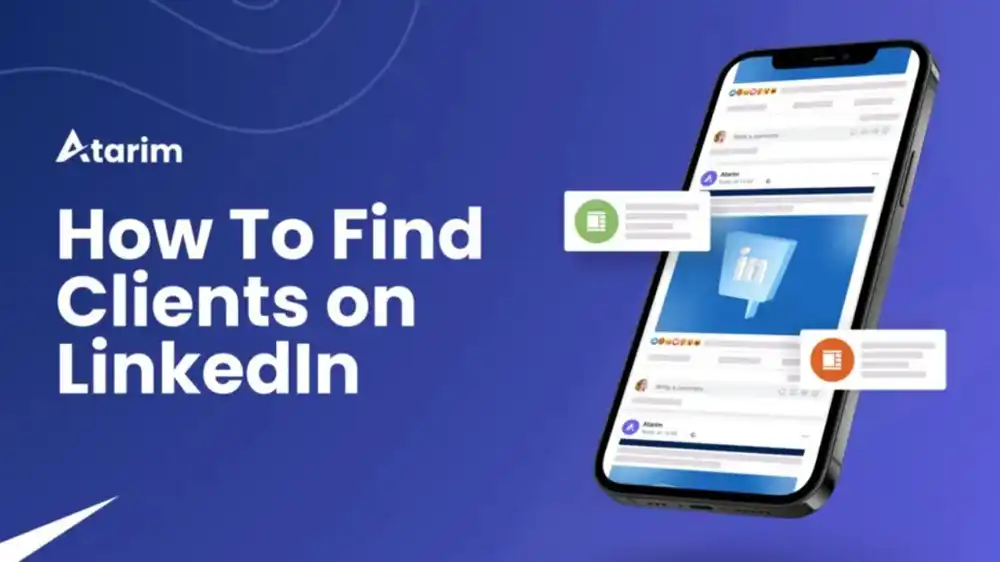
Key Points
- Research suggests optimizing your LinkedIn profile and engaging with your network can help gain a clients on LinkedIn.
- It seems likely that building relationships through personalized outreach and providing value are effective strategies.
- The evidence leans toward consistency and patience being crucial for success on LinkedIn.
Optimize Your Profile
Start by ensuring your LinkedIn profile is professional and appealing. Use a clear headshot, craft a headline that highlights what you offer, and write a summary showcasing your expertise. This makes you more visible to potential clients.
Build and Engage Your Network
Connect with industry professionals and potential clients, personalizing your requests to increase acceptance. Engage by liking, commenting, and sharing their posts, and join relevant LinkedIn groups to expand your reach.
Reach Out and Provide Value
Send personalized messages to potential clients, focusing on building relationships rather than selling immediately. Share useful content, offer free resources, or host webinars to demonstrate your expertise and build trust.
Move Conversations Offline and Be Consistent
Once you’ve built rapport, suggest a call or meeting to discuss how you can help. Stay consistent with daily engagement, as gaining clients on LinkedIn takes time and persistence.
Detailed Strategies for Gaining Clients on LinkedIn
This section provides a comprehensive guide based on extensive research into LinkedIn client acquisition strategies, drawing from multiple authoritative sources. The following details expand on the key points, offering a step-by-step approach for users looking to leverage LinkedIn effectively.
Profile Optimization: The Foundation for Visibility
Your LinkedIn profile is your digital storefront, and optimizing it is critical for attracting clients. Use a professional headshot to make a strong first impression, as profiles with photos receive more views. Craft a compelling headline that clearly states your value proposition, such as “Freelance Graphic Designer Helping Brands Stand Out” rather than a generic title like “Designer.” The summary should highlight your expertise, past achievements, and what you offer, using relevant keywords to improve search visibility. For example, if you’re targeting marketing agencies, include terms like “digital marketing,” “brand strategy,” and “client growth.”
Research from Dripify: How to Get Clients From LinkedIn emphasizes using SEO techniques, such as incorporating keywords in your headline and summary, to ensure your profile appears in searches. Additional resources, such as Dripify: Improve LinkedIn Profile and Dripify: LinkedIn SEO, provide detailed tips on enhancing visibility.
Identifying and Targeting Ideal Clients
To gain clients, you must first define your ideal customer avatar. This involves identifying their industry, job titles, and pain points. For instance, if you’re a web developer, target marketing managers in e-commerce firms. Use LinkedIn’s advanced search to filter by keywords, location, and industry, and consider Boolean operators (e.g., “web development” AND “e-commerce”) for refined results, as suggested by Dripify: Boolean Search on LinkedIn.
For advanced targeting, LinkedIn Sales Navigator offers features like lead recommendations and saved leads, though it’s a paid tool. The LinkedIn Sales Blog: 7 Steps to Attract More Clients With LinkedIn recommends using Sales Navigator for criteria like title and industry, with insights from LinkedIn: How to Use Sales Navigator.
Building and Engaging Your Network
Networking is at the heart of LinkedIn client acquisition. Start by connecting with colleagues, former clients, and industry leaders, personalizing each request to increase acceptance rates. For example, mention a shared interest or connection in your message. Engage with your network by liking, commenting, and sharing their posts, which helps build rapport.
Participating in LinkedIn groups is another effective strategy. Join groups relevant to your industry, such as “Digital Marketing Professionals,” and contribute by answering questions or sharing insights. Dripify: LinkedIn Groups highlights this as a way to connect with potential clients. Additionally, publishing thought leadership content, such as LinkedIn Articles addressing audience pain points, can position you as an expert. An example is the article “5 Game-Changing Digital Marketing Strategies for Small Businesses,” as noted in Dripify: LinkedIn Articles.
Personalized Outreach and Relationship Building
Once connected, avoid the mistake of immediate pitching, which can alienate potential clients. Instead, send personalized messages that focus on building relationships. For instance, ask about their current challenges or share a relevant article. The LinkedIn Sales Blog advises speaking like a human, finding commonalities, and following advice from experts like Will Allred on communication, available at LinkedIn: Don’t Pitch and Connect.
The DigitalMarketer: Build a Steady Stream of Clients suggests a non-salesy welcome message, including a question like “Tell me something interesting about your work,” to drive engagement. This approach, informed by Ted Prodromou’s book Ultimate Guide to LinkedIn for Business, emphasizes helping without expecting immediate returns, pretending you’re at a coffee meeting.
Providing Value to Build Trust
Providing value is crucial for converting connections into clients. Share resources, guides, or e-books that address your target audience’s pain points. For example, host a webinar on “Effective Social Media Strategies for Small Businesses” to showcase your expertise. Dripify: Create Value for Customers offers ideas like sharing case studies or hosting workshops.
Engaging in conversations is also key—be proactive by offering insights on posts or articles, and ask questions to spark dialogue. This builds trust and positions you as a helpful resource, as noted in Dripify: How to Get Clients From LinkedIn.
Moving Conversations Offline and Closing Deals
After building rapport, transition relationships offline by suggesting a phone call or virtual meeting. The DigitalMarketer process includes inviting responders to a short call, asking, “Would you like my help?” at the end, and closing deals via these interactions. The LinkedIn Sales Blog emphasizes demonstrating credibility before moving offline, ensuring you’ve established value.
Leveraging Recommendations and Referrals
Recommendations enhance your profile’s credibility, making it easier to attract clients. Ask satisfied clients or colleagues for recommendations, highlighting specific projects. For example, request, “Could you recommend me based on our recent website redesign project?” Follow up with gratitude, as outlined in Dripify: LinkedIn Recommendations, which lists five steps: identify connections, personalize, highlight relationships, be specific, and express gratitude.
Additionally, leverage your existing network for referrals. Reach out to former colleagues or friends, personalizing messages to seek introductions, as suggested in Dripify: How to Get Clients From LinkedIn.
Consistency and Patience: The Long-Term Approach
Gaining clients on LinkedIn requires consistency. Dedicate 30 minutes daily to engage, as per the DigitalMarketer 8-step process, which includes connecting, messaging, and following up. The LinkedIn Sales Blog stresses building your reputation over time, with success stories like Darren McKee, who gained 1,000 followers per week by posting consistently for over 1,000 days, detailed at LinkedIn: Posted on LinkedIn 950 Days Straight.
Patience is key, as results take time. The Dripify article notes LinkedIn’s 800 million members worldwide offer immense potential, but building relationships is a gradual process.
Additional Strategies for Advanced Users
For those looking to scale, consider using LinkedIn automation tools like Dripify for connection requests and follow-ups, ensuring compliance with LinkedIn’s policies, as detailed at Dripify: LinkedIn Automation Tools. Optimize your Social Selling Index (SSI) for better performance, with tips at Dripify: LinkedIn SSI Score. Drive traffic to your website via your profile link, share content, and use LinkedIn ads for broader reach, as noted in Dripify: Increase Website Traffic Using LinkedIn.
Collaborate with influencers for guest posts or joint webinars to expand your audience, as suggested at Dripify: Digital Marketing Experts. For hidden profiles, use LinkedIn X-Ray Search, detailed at Dripify: LinkedIn X-Ray Search.
Tables: Key Strategies and Tools
Below is a table summarizing the core strategies, with corresponding tools and resources:
| Strategy | Description | Tools/Resources |
|---|---|---|
| Profile Optimization | Enhance visibility with professional photo, headline, summary, keywords. | Dripify: Improve LinkedIn Profile, Dripify: LinkedIn SEO |
| Network Building | Connect with professionals, personalize requests, engage via likes/comments. | Dripify: Self-Entrepreneur LinkedIn |
| Group Engagement | Join industry groups, participate in discussions, share expertise. | Dripify: LinkedIn Groups |
| Content Publishing | Share articles addressing pain points, engage in comments. | Dripify: LinkedIn Articles |
| Advanced Search | Use keywords, filters, Boolean operators for targeted searches. | Dripify: Boolean Search on LinkedIn |
| Sales Navigator | Advanced filters, lead recommendations, InMail for direct messaging. | Dripify: How to Use LinkedIn Sales Navigator |
| Recommendations | Request from clients, highlight projects, express gratitude. | Dripify: LinkedIn Recommendations |
| Value Provision | Share resources, host webinars, address audience challenges. | Dripify: Create Value for Customers |
Another table for daily engagement, based on the 8-step process:
| Step | Daily Action | Time Estimate |
|---|---|---|
| 1 | Identify ideal customer, use worksheet for targeting. | 5 minutes |
| 2 | Define problems you solve, focus on results. | 5 minutes |
| 3 | Optimize profile, ensure headline and summary attract clients. | 5 minutes |
| 4 | Connect, send non-salesy messages, include questions. | 5 minutes |
| 5 | Keep in touch, share relevant content every few months. | 5 minutes |
| 6 | Invite to calls, ask if they need help, close deals. | 5 minutes |
| 7 | Build authority, write recommendations, prompt reciprocation. | 5 minutes |
| 8 | Repeat steps 4-7 daily, maintain consistency. | Ongoing |
Success Stories and Statistics
Success stories underscore the potential of these strategies. Darren McKee’s consistent posting for over 1,000 days resulted in 1,000 followers per week, as detailed at LinkedIn: Posted on LinkedIn 950 Days Straight. The DigitalMarketer process helped create a six-figure business, with Ted Prodromou’s book Ultimate Guide to LinkedIn for Business providing further insights. LinkedIn’s 800 million members, as noted in Dripify, offer a vast pool for client acquisition.
Conclusion
Gaining clients on LinkedIn is a multifaceted process requiring profile optimization, targeted networking, engagement, and consistent effort. By following these strategies, users can build relationships, provide value, and ultimately secure clients, with patience being essential for long-term success.
Blog
How to Make Vegan Leather from Recycled Materials: A Step-by-Step Guide
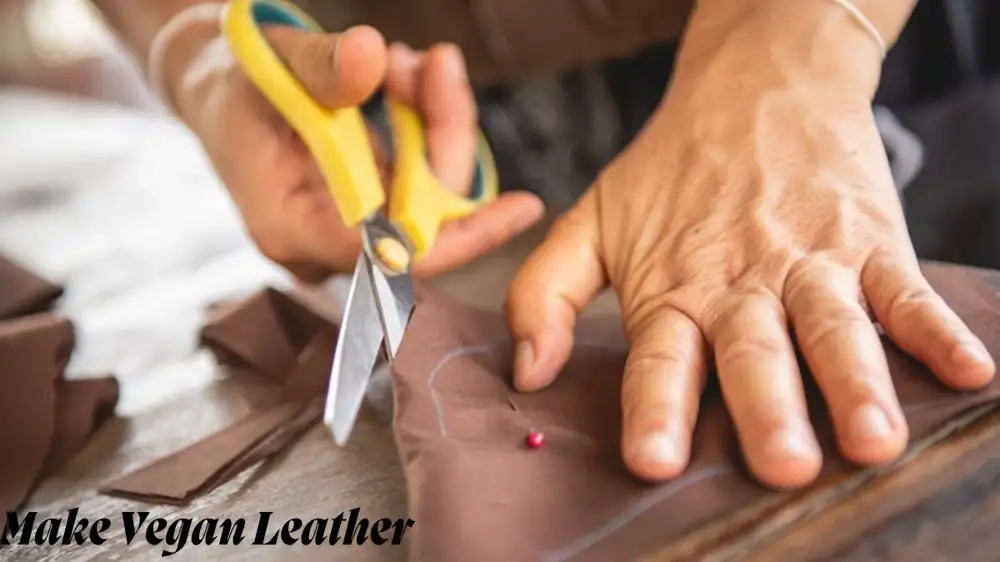
In recent years, vegan leather has become a cruelty-free and eco-friendly alternative to traditional animal leather. But did you know you can take sustainability a step further by creating vegan leather from recycled materials? This innovative approach reduces waste, lowers carbon footprints, and empowers you to craft stylish, durable goods at home.
This guide explores simple, creative methods to make vegan leather using everyday recycled items like plastic bottles, cork, pineapple leaves, and more. Let’s dive in!
Why Choose Vegan Leather from Recycled Materials?
Traditional leather production harms the environment through deforestation, water pollution, and methane emissions from livestock. Vegan leather offers a compassionate alternative, but many store-bought options rely on synthetic plastics like PVC, which aren’t biodegradable.
By using recycled materials, you:
- Reduce landfill waste (e.g., repurposing plastic bottles or fruit scraps).
- Save resources (no need for virgin plastics or animal farming).
- Create customizable, unique textures (each material has its look and feel!).
Whether you’re a DIY enthusiast or a sustainability advocate, making vegan leather at home is a fun, impactful project.
Materials You Can Use to Make Vegan Leather
Almost any flexible, durable recycled material can become vegan leather! Here are the most popular options:
- Recycled Plastic (rPET): Plastic bottles, packaging, or old polyester fabrics.
- Cork: Wine corks, corkboard scraps, or industrial cork waste.
- Plant-Based Fibers: Pineapple leaves (Piñatex), apple peels, or mushroom mycelium.
- Upcycled Fabrics: Denim, canvas, or rubber from old tires.
Each material requires slightly different techniques. Below, we’ll break down five easy methods.
Method 1: Recycled Plastic Bottle Leather (rPET)
Materials Needed:
- Clean plastic bottles (PET)
- Scissors or craft knife
- Non-toxic adhesive (e.g., cornstarch glue)
- Baking parchment
- Iron or heat press
Steps:
- Prepare the Plastic:
Cut bottles into flat sheets. Remove labels and caps, then slice vertically. Flatten the pieces and trim the edges. - Create Layers:
Overlap plastic pieces on baking parchment. Apply adhesive between layers to bond them. - Press and Heat:
Cover with another parchment sheet. Iron at medium heat (150°C/300°F) for 10–15 seconds, applying even pressure. Repeat until layers fuse into a flexible sheet. - Finish:
Let cool. Sand edges for smoothness, or dye with natural pigments for color.
Best For: Bags, wallets, and accessories. rPET leather is water-resistant and sturdy!
Method 2: Cork Leather from Wine Corks
Materials Needed:
- Wine corks (10–15 for a small sheet)
- Food processor or grater
- Non-toxic binder (flour paste or eco-friendly glue)
- Rolling pin
- Wax paper
Steps:
- Shred the Corks:
Grate corks into fine granules using a food processor. Avoid plastic-backed corks. - Mix with Binder:
Combine cork granules with binder until it forms a dough-like consistency. - Roll and Dry:
Place the mixture between wax paper sheets. Roll flat (3–5mm thick). Air-dry for 24–48 hours. - Seal (Optional):
Brush with beeswax or linseed oil for a polished, water-resistant finish.
Best For: Notebook covers, coasters, or jewelry. Cork is lightweight and naturally textured.
Method 3: Pineapple Leaf Leather (Piñatex)
Materials Needed:
- Pineapple leaves (from 5–6 pineapples)
- Blender
- Natural dye (optional)
- Cornstarch or agar-agar (as a binder)
- Mesh screen or cloth
Steps:
- Extract Fibers:
Boil leaves for 30 minutes to soften. Scrape off pulp with a knife, revealing long fibers. Rinse and dry. - Blend and Bind:
Mix fibers with 1 cup water and 2 tbsp binder in a blender. Pour onto a mesh screen to form a thin layer. - Dry and Press:
Sun-dry for 2–3 days, pressing occasionally with a heavy book to flatten.
Best For: Shoes, belts, or upholstery. Piñatex has a rustic, fibrous appearance.
Method 4: Mushroom Leather (Mycelium)
Materials Needed:
- Mushroom mycelium starter kit (available online)
- Organic substrate (sawdust or straw)
- Baking tray
- Dehydrator or oven
Steps:
- Grow Mycelium:
Spread the substrate in a tray. Inoculate with mycelium spores. Store in a dark, humid place for 2–3 weeks. - Harvest and Press:
Once fully grown, peel the mycelium mat from the substrate. Press between boards to flatten. - Tan and Dry:
Soak in a natural tannin (like oak gall solution) for 1 hour. Dehydrate at 40°C (104°F) until leathery.
Best For: High-fashion items. Mycelium leather is biodegradable and mimics animal leather’s softness.
Method 5: Apple Peel Leather
Materials Needed:
- Apple peels (from 10–12 apples)
- Blender
- Glycerin or vegetable glycerin
- Baking sheet
Steps:
- Blend Peels:
Puree peels with 1 tbsp glycerin until smooth. - Spread and Dry:
Pour the mixture onto a baking sheet lined with parchment. Dry in sunlight or an oven at 50°C (120°F) for 8–12 hours. - Finish:
Peel off the sheet. Condition with coconut oil for flexibility.
Best For: Small accessories or decorative patches. Apple leather has a fruity scent and matte finish.
Customizing Your Vegan Leather
Make your creations stand out with these tips:
- Dyeing: Use turmeric (yellow), beet juice (pink), or spirulina (green).
- Embossing: Press leaves or lace into the material before drying.
- Stitching: Reinforce edges with upcycled thread or hemp cord.
Caring for Vegan Leather
- Cleaning: Wipe with a damp cloth. Avoid harsh chemicals.
- Storage: Keep in a cool, dry place to prevent mold.
- Repair: Patch tears with adhesive or a matching material piece.
Environmental Impact and Challenges
Pros:
- Reduces plastic and organic waste.
- Uses less water and energy than animal leather.
Cons:
- Some methods require practice to perfect.
- Plant-based leathers may be less durable than synthetics.
5 FAQs about How to Make Vegan Leather from Recycled Materials
1. Can I make vegan leather at home without specialized equipment?
Answer: Absolutely! Many methods for making vegan leather from recycled materials require only basic household items like scissors, a blender, an iron, or a baking sheet. For example, creating cork leather or apple peel leather can be done with minimal tools. While some techniques, like growing mushroom leather, may need a starter kit, most DIY vegan leather projects are beginner-friendly and don’t require expensive equipment.
2. How durable is vegan leather made from recycled materials compared to traditional leather?
Answer: The durability of vegan leather depends on the materials and methods used. For instance, recycled plastic bottle leather (rPET) is highly durable and water-resistant, making it ideal for bags and accessories. On the other hand, plant-based options like pineapple or apple leather may be softer and better suited for lightweight items. While vegan leather may not always match the longevity of traditional leather, proper care (like sealing and conditioning) can significantly extend its lifespan.
3. Is vegan leather from recycled materials biodegradable?
Answer: It depends on the materials used. Plant-based vegan leathers, such as those made from pineapple leaves, cork, or mushroom mycelium, are biodegradable and compostable. However, vegan leather made from recycled plastics (like rPET) is not biodegradable, though it still helps reduce waste by repurposing existing materials. If biodegradability is a priority, opt for natural, plant-based options.
4. Can I scale up DIY vegan leather production for small businesses?
Answer: Yes, you can! Many of the methods described in the article, such as using pineapple leaves or recycled plastics, can be scaled up with some adjustments. For example, investing in a heat press for rPET leather or a dehydrator for mushroom leather can streamline production. Additionally, sourcing bulk recycled materials and experimenting with efficient techniques can help you create consistent, high-quality vegan leather for a small business.
5. What are the best ways to dye vegan leather naturally?
Answer: Natural dyes are a great eco-friendly option for coloring vegan leather. You can use ingredients like turmeric (for yellow), beet juice (for pink), spirulina (for green), or coffee grounds (for brown). Simply mix the dye with water, apply it to the material using a brush or sponge, and let it dry. For a more vibrant color, repeat the process or add a natural fixative like vinegar. This approach is safe, sustainable, and adds a unique touch to your creations.
Final Thoughts
Creating vegan leather from recycled materials is a rewarding way to support sustainable fashion. Whether you’re crafting a wallet from plastic bottles or a chic bag from pineapple leaves, each project makes a difference. Ready to start? Gather your materials, experiment with textures, and share your creations to inspire others!
By embracing DIY vegan leather, you’re not just making accessories—you’re shaping a greener future.
Most People ask questions on Google about How to Make Vegan Leather from Recycled Materials
What is the process of making vegan leather?
Vegan leather is made without animal hides and instead uses plant-based or synthetic materials. The process varies depending on the type of material used but generally follows these steps:
- Material Sourcing – Vegan leather can be made from plants like mushrooms, pineapples, apples, cacti, or synthetic materials like polyurethane (PU).
- Processing & Treatment – Plant fibers are extracted and mixed with binders or resins to create a durable, leather-like texture. In synthetic versions, plastic is melted and spread into thin layers.
- Shaping & Drying – The material is shaped into sheets and left to dry. This stage determines its thickness and flexibility.
- Texturizing & Coloring – To mimic real leather, the material is embossed with a grain pattern and dyed using eco-friendly or synthetic dyes.
- Finishing Touches – A protective coating is applied for durability, water resistance, and longevity.
How do you make vegan plant-based leather?
Plant-based vegan leather is made using natural materials and fewer chemicals compared to synthetic alternatives. The process depends on the plant source but generally includes:
- Collection & Processing – Fruit waste (pineapple leaves, apple peels, etc.), cactus, or mushrooms are harvested and dried.
- Fiber Extraction & Blending – The plant fibers are broken down and mixed with natural binders like starch or plant-based resins to form a leather-like sheet.
- Shaping & Texturing – The material is rolled out, textured, and sometimes reinforced with fabric backings for extra strength.
- Tanning & Dyeing – The sheets are treated with natural tannins (from tree bark, for example) and dyed with plant-based or non-toxic dyes.
- Finishing – A protective, biodegradable coating is applied for durability and water resistance.
Popular plant-based vegan leathers include Piñatex (pineapple leather), Mylo (mushroom leather), and Desserto (cactus leather).
How do you recycle vegan leather?
Recycling vegan leather depends on its materials:
- Plant-based vegan leather is biodegradable, meaning it will naturally break down over time. Some types can be composted in industrial facilities.
- Synthetic vegan leather (PU, PVC) is harder to recycle due to plastic content. Some brands have take-back programs for recycling.
- Upcycling is another option—old vegan leather items can be repurposed into new accessories like wallets or keychains.
To be more eco-friendly, look for plant-based or recycled-material vegan leathers rather than plastic-based options.
What materials are used to make vegan leather?
Vegan leather is made from a variety of natural and synthetic materials, including:
🌱 Plant-Based Materials:
- Pineapple leaves (Piñatex)
- Cactus (Desserto)
- Mushrooms (Mylo)
- Apple peels
- Cork
- Banana fibers
🛠 Synthetic Materials:
- Polyurethane (PU)
- Recycled plastics (from bottles or industrial waste)
- Polyvinyl chloride (PVC) – less eco-friendly
The best vegan leathers are plant-based or made from recycled materials, as they are more sustainable than plastic-based versions.
What are the ingredients in vegan leather?
The ingredients vary depending on the type of vegan leather:
- Plant-Based Leather – Natural plant fibers, bio-based binders (like corn starch or natural resins), plant-based dyes, and protective coatings made from waxes or oils.
- Synthetic Vegan Leather – Polyurethane (PU) or PVC, plasticizers, synthetic dyes, and chemical coatings for texture and durability.
For an eco-friendly choice, look for low-plastic, biodegradable vegan leathers made from plants or recycled materials.
-
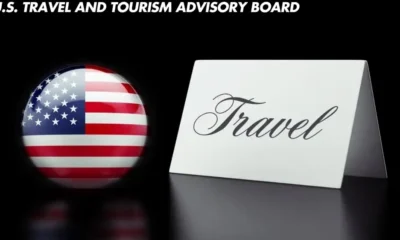
 Travel7 months ago
Travel7 months agoTop 5 Ways Stephen Revetria Elevates the U.S. Travel and Tourism Advisory Board
-

 Crypto8 months ago
Crypto8 months agoUnlock 7 Powerful Cryptocurrency Insights: Delving into NewzNav.com’s Crypto Archives
-

 Technology8 months ago
Technology8 months agoHydrogen Water Machines: Revolutionizing Hydration and Wellness
-

 NEWS & Society8 months ago
NEWS & Society8 months agoChurch of the Holy Spirit News: Events & Impact
-
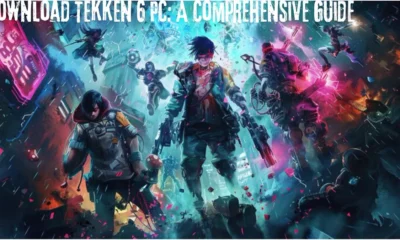
 Games8 months ago
Games8 months agoDownload Tekken 6 PC: A Comprehensive Resource
